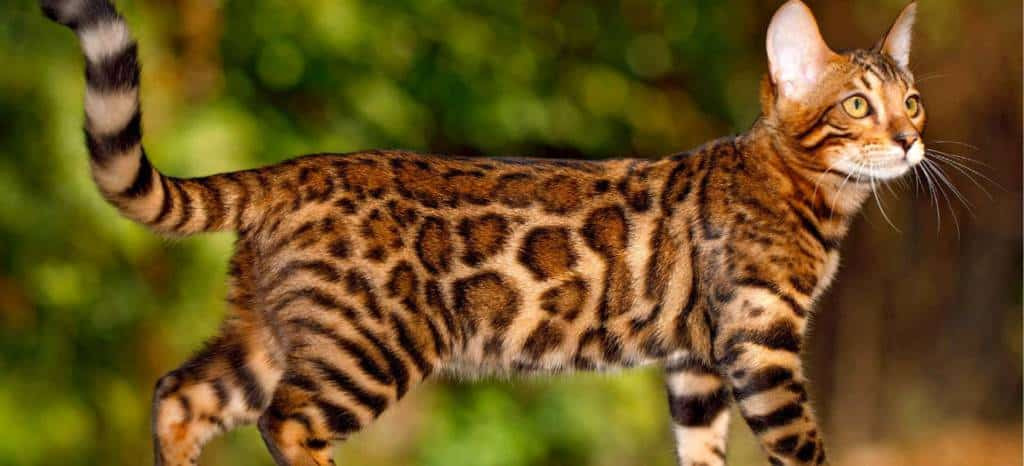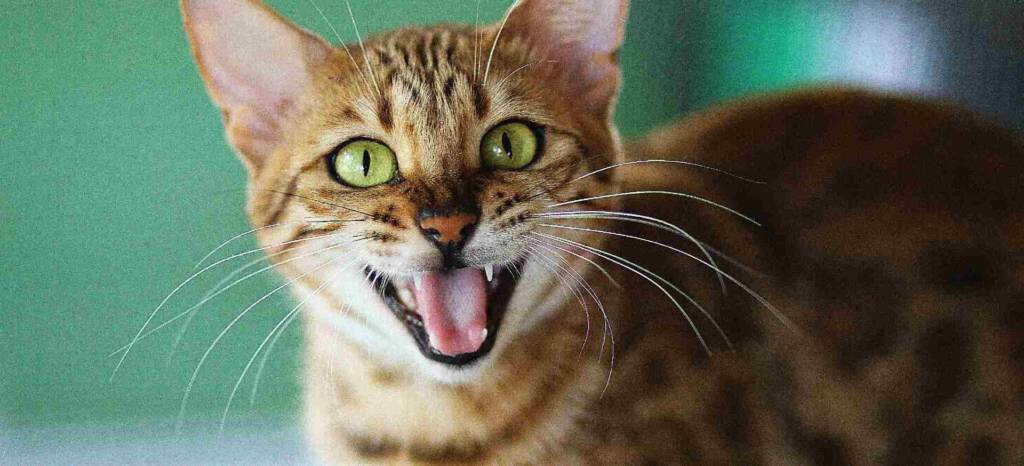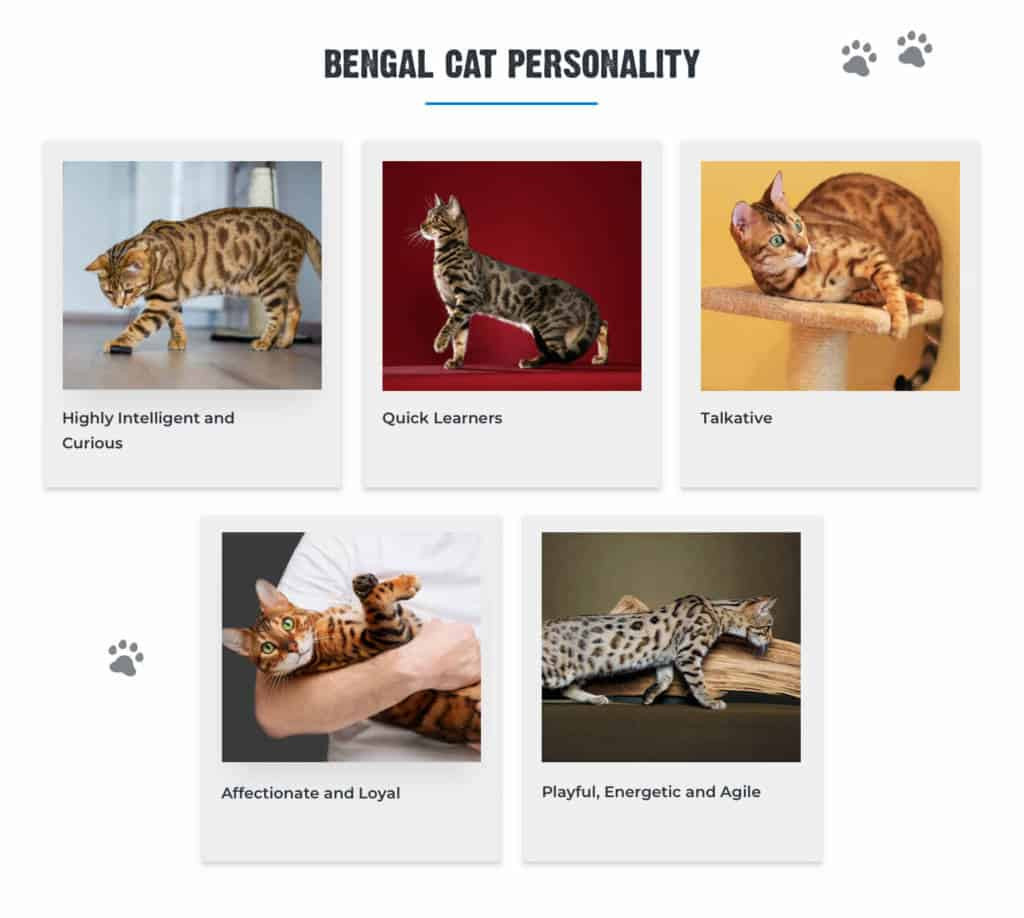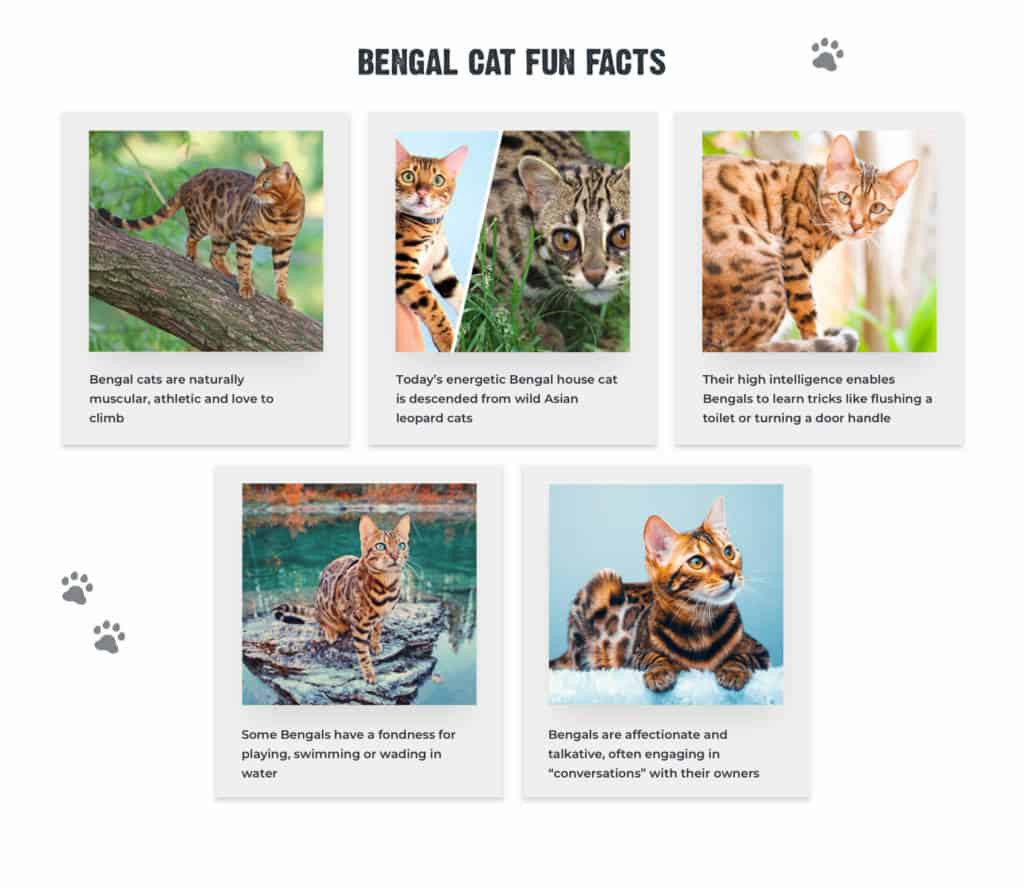If you’ve ever dreamed of owning a pet that embodies the grace of a leopard but fits perfectly into your home, the Bengal House Cat might be your ideal feline companion. This captivating breed is celebrated for its striking wild appearance, carefully cultivated to mirror the beauty of a leopard, while maintaining the affectionate and manageable temperament of a domestic cat. Dive in to discover the fascinating details that make the Bengal house cat a truly exceptional breed.
The Exotic Origins of Bengal Cats
Bengal cats are classified as a hybrid breed, a testament to their intriguing lineage. Their story began in the early 20th century when breeders first experimented with crossing domestic cats with Asian leopard cats. The Asian leopard cat, scientifically known as Prionailurus bengalensis – hence the name “Bengal” – is a small, wild cat species native to the lush landscapes of Southeast Asia. These wild ancestors are admired for their slender physique and undeniably exotic aesthetic.
While these initial breedings occurred over a century ago, the Bengal breed as we know it today truly took shape in the 1970s. Jean Sugden Mill played a pivotal role in this development, diligently breeding Asian leopard cat hybrids with various domestic cat breeds. Her vision was clear: to create a breed that honored the captivating wild appearance of the Asian leopard cat while ensuring a gentle and domesticated personality suitable for a family home.
Today’s Bengal kittens are descendants of generations of Bengals, now significantly removed from their wild Asian leopard cat ancestors. Their rarity and beauty contribute to their status as one of the more expensive cat breeds. A Bengal cat of show quality can indeed command a price tag of up to $2,000, reflecting their desirable traits and the careful breeding involved in maintaining the breed’s standards.
Appearance: The Striking Look of a Bengal House Cat
 A Bengal cat with a distinctive spotted coat sits alertly, showcasing its muscular build and wild appearance.
A Bengal cat with a distinctive spotted coat sits alertly, showcasing its muscular build and wild appearance.
Bengal cats are instantly recognizable for their jungle-cat allure and iconic markings. Their physical characteristics speak to their wild ancestry: muscular bodies and elongated hind legs grant them a powerful and agile gait. Paired with sleek coats and uniquely rounded ear tips, they are a living echo of their wild relatives. While their leopard-like aesthetic is a breed standard, Bengal house cats exhibit a beautiful range of variations in coat and eye color.
Coat Color and Patterns
The Bengal’s coat is a marvel – soft, sleek, and surprisingly easy to groom. They display two primary coat patterns: spotted and marbled, each available in standard colors like brown, snow, and silver. Beyond these, you can find Bengals in non-standard hues such as charcoal, blue, and the striking melanistic (solid black). Snow Bengals are particularly enchanting, featuring coats of ivory or cream, a result of albinism inherited from their Siamese and Burmese lineage.
An extraordinary feature found in some Bengals is the “glitter” coat. This shimmering effect comes from translucent, hollow hair shafts that capture and reflect light, giving their entire coat a sparkling quality that’s noticeable even in dim lighting.
Eye Color
Adding to their captivating gaze, Bengal house cats possess almond-shaped eyes in a spectrum of shades including hazel, brown, green, gold, or copper. Snow Bengals often present with mesmerizing blue, blue-green, or aqua eyes, further enhancing their exotic charm.
Biology and Health of Bengal Cats
Bengal cats are generally robust and healthy, a trait admired by many owners. However, like all breeds, there are certain health conditions that have been observed within the Bengal lineage:
- Distal Neuropathy: A nervous system disorder that can lead to muscle weakness.
- Flat-Chested Kitten Syndrome: A developmental issue with varying degrees of severity, often resolving itself as the cat matures.
- Hip Dysplasia: Though more common in larger dog breeds, Bengals can be susceptible to hip dysplasia, potentially causing lameness.
- Hypertrophic Cardiomyopathy (HCM): The most common form of heart disease in cats.
- Patellar Luxation: A hereditary condition involving the dislocation of the kneecap, with severe cases requiring surgical intervention.
- Progressive Retinal Atrophy (PRA): A degenerative eye disease that can lead to vision loss.
Weight and Nutritional Needs
Despite their seemingly large appearance due to their length and muscular build, Bengal cats are actually a medium-sized breed. Females typically weigh around 6 pounds, while males can reach up to 15 pounds.
Their energetic nature means Bengal house cats often naturally maintain a healthy weight through activity. However, providing them with a high-quality cat food is crucial. A diet rich in minimally processed ingredients aligns with their needs as obligate carnivores, ensuring they receive optimal nutrition.
Life Expectancy
The average lifespan of a Bengal cat ranges from 10 to 16 years. This duration is influenced by various factors, including their overall health, genetics, and lifestyle – particularly whether they live indoors or outdoors.
Personality and Temperament of the Bengal House Cat
 A playful Bengal cat with a marbled coat leaps in mid-air, showcasing its energetic and athletic personality.
A playful Bengal cat with a marbled coat leaps in mid-air, showcasing its energetic and athletic personality.
Don’t be deceived by their wild cat looks; Bengal house cats are renowned for their affectionate and friendly nature, just like many other domestic breeds.
 A graphic illustrating Bengal cat personality traits, highlighting intelligence, activity level, sociability, and vocalization.
A graphic illustrating Bengal cat personality traits, highlighting intelligence, activity level, sociability, and vocalization.
These cats develop strong bonds with their families and are known for their loyalty. However, being an active breed, they generally prefer not to be restrained or held for extended periods. Their exceptional intelligence makes them highly trainable; some Bengal owners even successfully teach them complex tricks like using and flushing toilets!
Bengal cats are brimming with energy and athleticism. They have a natural inclination to climb and surprisingly, many enjoy playing in water. To cater to their active lifestyle, a tall cat tree is a must, along with a variety of toys that challenge both their minds and bodies.
Fun Facts About Bengal Cats
 A collage of fun facts about Bengal cats, including their love for water, dog-like loyalty, and trainability.
A collage of fun facts about Bengal cats, including their love for water, dog-like loyalty, and trainability.
Frequently Asked Questions about Bengal House Cats
Q: Are Bengal cats hypoallergenic?
A: While no cat breed is truly hypoallergenic, Bengal cats are often cited as being less allergenic than many other breeds. As PetHelpful explains, truly hypoallergenic cats don’t exist. However, Bengal cats produce less dander and shed less, which can minimize allergic reactions for sensitive individuals.
Q: Do Bengal cats get along with children and other pets?
A: Generally, yes! According to CatTime, the social and active Bengal is an excellent choice for households with children and cat-friendly dogs. It’s advisable, however, to keep smaller pets, such as hamsters, rabbits, or guinea pigs, safely away from Bengals, as their strong predatory instincts might be triggered.
In conclusion, the Bengal house cat offers a unique blend of wild beauty and domestic charm. Their striking appearance, combined with an intelligent and affectionate personality, makes them a captivating and rewarding pet for the right owner.

